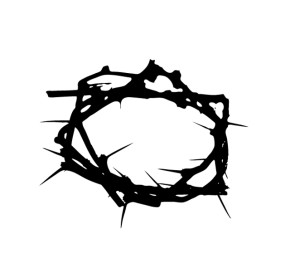The King of Thorns
 The eternal Word of God, incarnated in a human body, stands before the Roman governor Pilate. Jesus, the King of kings and Lord of lords, is questioned and scourged.
The eternal Word of God, incarnated in a human body, stands before the Roman governor Pilate. Jesus, the King of kings and Lord of lords, is questioned and scourged.
Kings live in palaces. But the day Jesus stands before Pilate, bound and beaten, is the only time he ever sets foot in an earthly palace.
Pilate repeatedly tries to let Jesus go, but the leaders of the crowd relentlessly pressure Pilate and manipulate Roman law to corner him. He thinks he has authority over Jesus and fears even more when he realizes he does not. He tries in vain to grasp who Jesus is, and the clearest thing Jesus tells him is, “My kingdom is not of this world” (John 19:36).
Kings wear crowns. But the crown of thorns, maliciously twisted together and pressed on Jesus’ head, is the only earthly crown he ever wears.
Thorns represent pain, tears, wounds, and even a curse (Genesis 3:17–18). Crowns represent authority, power, and rule.
The Roman soldiers intend the crown of thorns to be a mockery. And mock they do. What hurts God more—the physical pain of being scourged, or the emotional pain of being scorned?
What the soldiers don’t know is how prophetic how true their intended mockery will forever be. And too many believers forget this.
Jesus is the King of Thorns. His reign is over all types of people—but especially those who know pain, and those with tears, and the cursed.
The King of Thorns receives and redeems the broken and the wounded who bear their own thorns in this life. He turns sorrow into joy, alienation into belonging, ruin into wholeness, death into life.
As we gather with the King of Thorns, bringing our thorns to him—and bringing others along with us—something changes: Our thorns gradually transform into blossoms.
We can see these growing blossoms everywhere a person genuinely receives the Christ and is transformed by the renewing of their minds. And it is beautiful.
What thorns would you bring him?
—
Photo credit: ReneYoshi, freeimages.com








Beautiful.